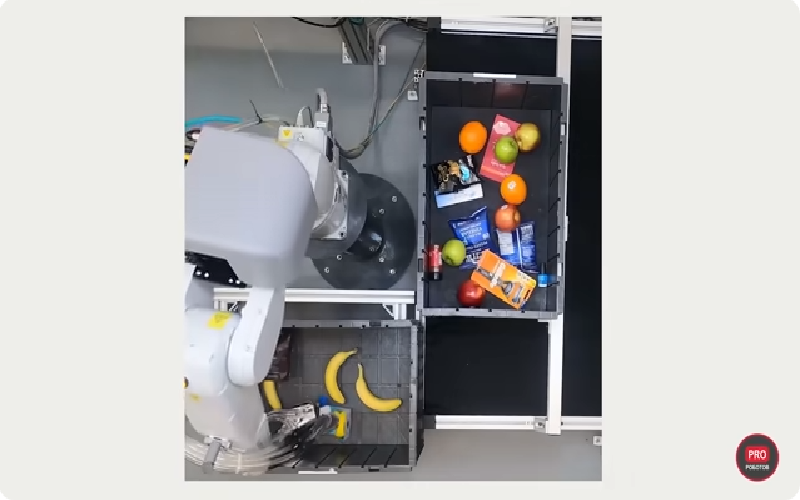AI in logistics and transportation
Introduction to AI in Logistics and Transportation
AI is playing an increasingly larger role in the logistics and transportation industries. Within logistics, AI can be used for routing optimization, intelligent transport systems, inventory management and real-time supply chain analytics. It can also be used to reduce cost and increase efficiency in the distribution of goods by leveraging automation and analytics technologies. In the transportation sector, AI can be leveraged to reduce traffic congestion, improve driver safety as well as provide predictive analysis regarding fuel/energy consumption.
Projects utilizing AI have had successes in reducing delivery costs by accurately optimizing routes to increase delivery efficiency and accuracy. Additionally, AI algorithms have been developed to help optimize loading of packages onto trailers which has improved space utilization by 15-20%. Other benefits realized through successful AI projects include reduction of paperwork associated with vehicle dispatch systems or warehouse management systems.
However, there are challenges that remain when using AI in logistics and transportation. The complexity of tracking dynamic variables such as environmental issues or dynamic events present difficulties when attempting to integrate this data into an AI system. In order for a successful implementation of AI within a given industry computer vision technology must also be properly developed for things such as license plate recognition or route planning assistance.
In response to the challenges posed by implementing these technologies private entities have stepped up investments in research dedicated to improving the ability for this technology to properly scale across markets and industries it is being utilized within. This investment has helped further develop these technologies thus providing a better return on investment from their projects within logistic operations or other related fields of work while expanding upon their applications across industries.
See also AI-based product recommendationsBenefits of AI in Logistics and Transportation
Improved Efficiency: One of the key benefits to utilizing AI within logistics and transportation is improved efficiency. AI algorithms can automate repetitive, mundane tasks, such as delivery and scheduling, reduce human error, and help similar but different tasks be done more efficiently. AI can also analyze customer behavior to inform how best to serve them; by predicting demand it can manage resources across different locations with better precision.
Cost Savings: AI solutions can significantly reduce costs in areas such as labor, fuel consumption, and additional transport costs. Combining data from sensors onboard vehicles with route optimization algorithms could greatly minimize driver fatigue and optimize routes for fuel efficiency using machine learning models analysis to predict utilization rates in different regions. This would result in cost savings for both passengers and companies alike.
Accurate Forecasting: Transporting goods along an unpredictable route or a tight timeline requires accurate forecasting abilities – an area where AI has great potential for improving productivity. By gathering information from numerous sources such as traffic patterns, weather forecasts, customer buying habits and more, transport firms can make smarter predictions about their supply chain operations – meaning shorter wait times and better outcomes for customers overall. Additionally, utilizing predictive analytics will allow organizations to better forecast future loads or seasonal heaviness or lulls while being able to react faster when problems arise during transit.
How AI is Improving Logistics and Transportation
AI is able to automate many processes within the logistics and transportation sector, helping to reduce labor costs and improve efficiency. It can be used to simplify and streamline bookings, invoicing, shipment tracking, and distribution while still ensuring accuracy, leading to lower long-term costs. AI also makes it possible to quickly detect errors in the system, enabling workers or customers to quickly address issues before they create disruptions.
See also AI in computer vision
AI can also greatly enhance customer service by providing customers with real-time answers about orders and shipments. With automated delivery updates, intelligent routing solutions for faster deliveries, and accurate ETA notifications placed through apps or text messages, companies can grow their customer base as customers value convenience above all else.
Furthermore, AI can provide insights into customer behavior by analyzing data from past purchases and deliveries. AI technologies like machine learning are so advanced that it has become possible for a company to predict when a customer is likely to make a particular purchase based on patterns of past purchases. With this knowledge companies can then make appropriate adjustments in order volume and route planning to help better satisfy customer needs.
Future Applications of AI in Logistics and Transportation
Potential Applications:The most obvious use of AI in logistics and transportation is to automate the task of sorting and routing items. By automating this process, companies can increase their efficiency and reduce costs. In addition, AI-enabled systems can reduce traffic congestion by suggesting alternate routes or providing timely alerts about poor road conditions. AI also has a role to play in planning our future transport networks, forecasting traffic patterns, and providing feedback on route optimization. Machine learning algorithms can also be used for predictive maintenance of vehicles – something that is critical for the safety of passengers. Furthermore, there are applications for AI in last mile delivery services – where a robotic system autonomously navigates its way from a distribution centre to final destination.
Future Impact: As technology continues to advance, so too will the capabilities of artificial intelligence within the logistics and transportation space. We can expect more efficient delivery management systems, increased automation of processes such as inventory control, improved decision-making capabilities through machine learning algorithms, reduced fuel consumption through vehicle optimization systems and better customer experiences with automated booking services. Ultimately these developments should lead to an enhanced customer experience, lower operational costs and truly autonomous transport networks – paving the way for a brighter future in logistics and transportation
See also AI in image recognition
